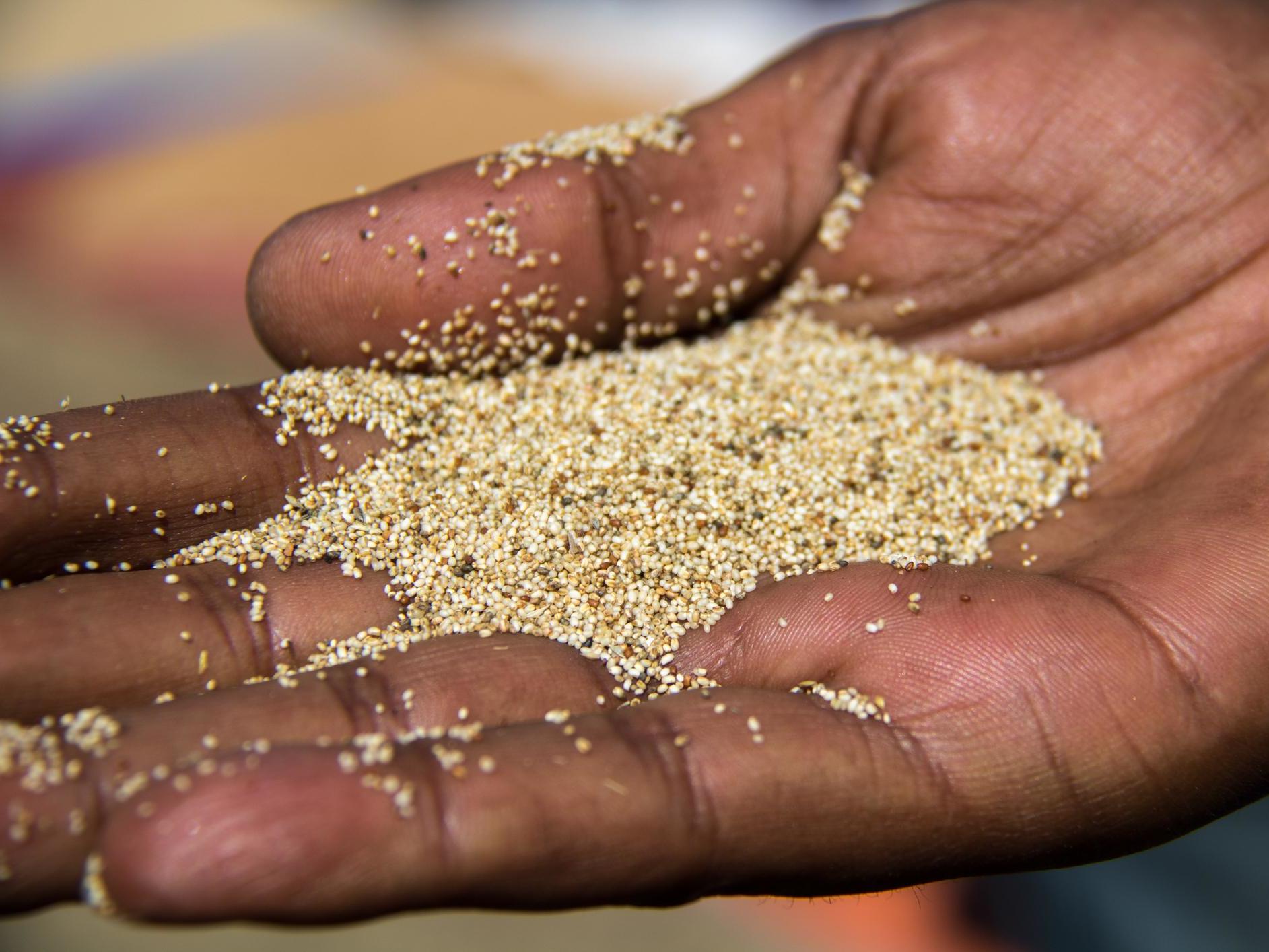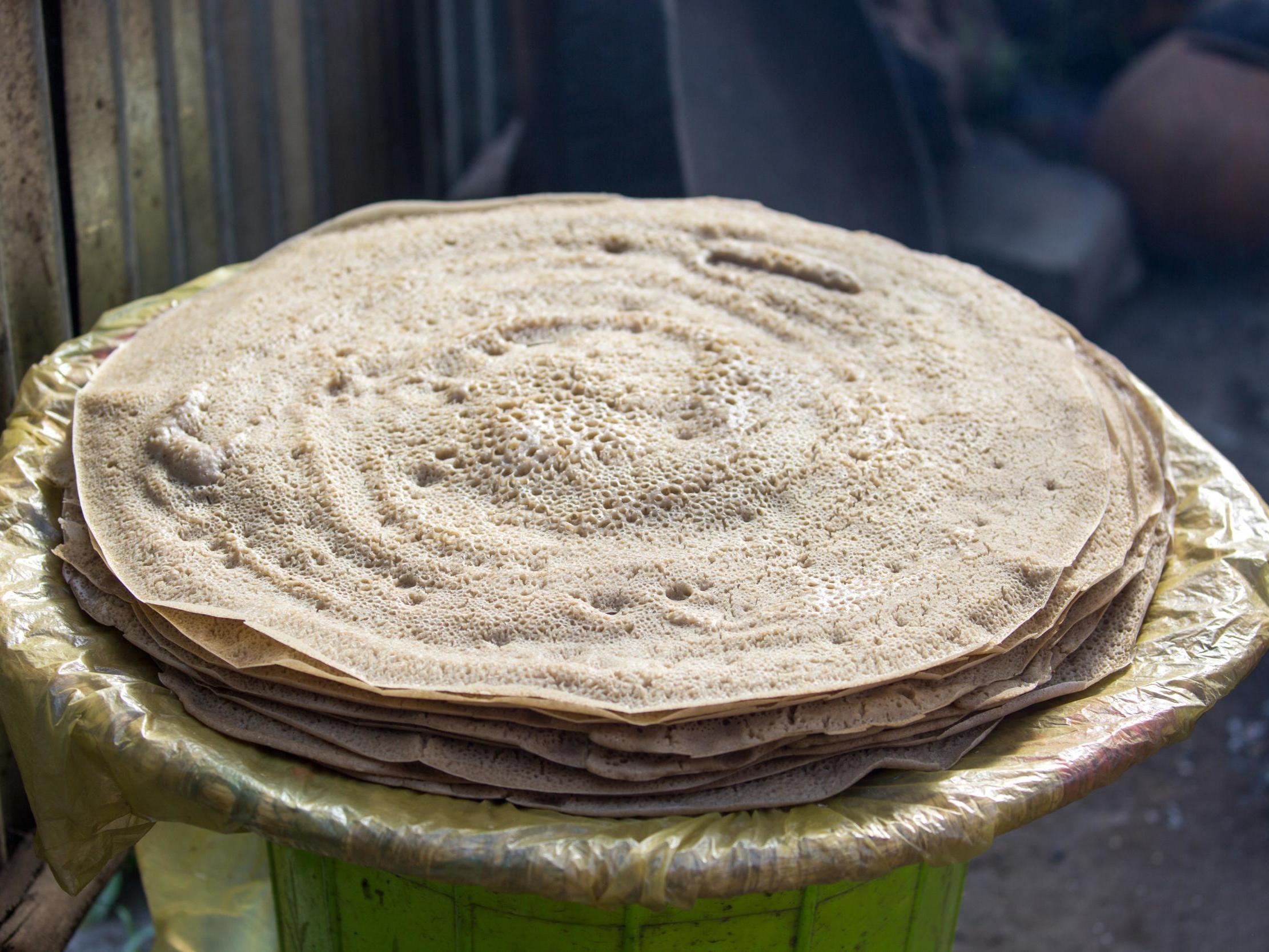Scientists unlock ‘massive diversity’ of Ethiopia’s superfood in bid to save it from global warming
Experts hope 'fast-track breeding' of specific types of teff grain will increase production and yield, reports Kate Ng


Scientists have mapped the “massive diversity” of an ancient grain for the first time in a race to save the staple crop of Ethiopia from dwindling production caused by increasing global temperatures.
Teff is the world’s smallest food grain and has long been part of Ethiopia’s diet, with many eating it at least once a day. Gluten-free and rich in fibre and nutrients, the grain has been cultivated in Ethiopia and Eritrea for at least 2,000 years.
It is the main ingredient in injera, a flat pancake that features prominently in Ethiopian cuisine.
In the past five years, teff has grown in popularity as a “superfood” in the west, due in part to the lifting of an export ban on the raw form of the grain that was implemented in 2006.
But rising global temperatures could force teff farmers to move to higher ground to grow it, driving down production during a time when the population is increasing and food is scarce.
By mapping the grains diversity, scientists have found that its DNA consists of 3,850 known types, each with unique “traits” that allow them to survive in different environmental conditions.
In a study published in the Agriculture, Ecosystems and Environment Journal, scientists found the varieties may be heat or drought-tolerant, or could produce more grain, depending on where they are grown.
Carlo Fadda, from Alliance of Biodiversity International and CIAT, and co-author of the study, said in a news release: “The moment you know what is in the grain, you can fast-track breeding of particular types.
“For example, combining low-yield types cultivated in hot areas with highly productive types grown in cold areas, to get a highly productive, heat-tolerant grain.
“Understanding this massive genetic diversity within teff opens up a huge possibility to breed new climate-resilient varieties naturally, within a shorter timeframe of 5 to 10 years, compared with hundreds of years in the wild.

“No other country growing this crop has this level of genetic diversity which makes Ethiopia unique,” he added. “This diversity can be used to increase production for local demand, or even for export, despite weather conditions.”
As Ethiopia is the grain’s country of origin, it has the highest diversity in the grain on global scale and produces around 90 per cent of the world’s teff.
However, the country is not among the biggest teff exporters in the world due to a number of reasons, including the absence of modern production means in teff cultivation, said co-author Ermias Abate Desta from the Amhara Regional Agricultural Research Institute (ARARI).
With the boom of teff’s status as a superfood, it has been cultivated in Australia, China, India, South Africa and the US.
“Assuming compliance with international regulations for access and benefit-sharing, Ethiopia would benefit from the spread of teff as a global crop because it has an enormous reservoir of teff traits that are not present anywhere else in the world,” said Mr Desta.
In comparison with other globally important crops, teff is considered an “orphan” or under-utilised crop. However, current research into teff aims to characterise the genetic diversity of a core collection of farmer-selected varieties that have evolved over generations to understand their potential in the agricultural landscape.
This includes breeding new varieties of teff with higher yield, resistance to pests and climate-related stresses, and other traits desired by local farmers.
Matteo Dell-Acqua, a co-author from Scuola Superiore Sant’Anna, said: “These actions involve public and private breeding efforts as well as national and international bodies concerned with the conservation of agrobiodiversity of teff in the wake of climate change.”
Join our commenting forum
Join thought-provoking conversations, follow other Independent readers and see their replies
Comments